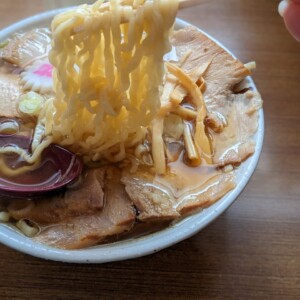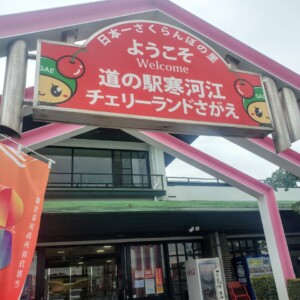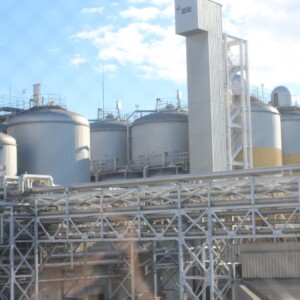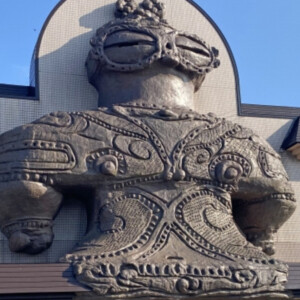
The development of Akita city began in Tsuchizaki - Tsuchizaki Minato at the mouth of the Omono River, which developed as a center of distribution [Akita Prefecture]
table of contents
- 1 Tsuchizaki Minato has been the gateway to Akita since the Asuka period.
- 2 Tsuchizaki Minato has developed as a gateway to foreign countries since ancient times. Historical discoveries from Akita Castle
- 3 Merchants from Tsuchizaki Minato moved to the castle town of Kubota Castle, and the town became temporarily deserted.
- 4 Yoshinobu Satake recognized the important role of Minato Tsuchizaki
- 5 Various supplies were brought to Akita by Kitamaebune.
- 6 Tsuchizaki Minato, where large ships could not anchor due to sand accumulation and shallow water depth
- 7 Tsuchizaki Minato has been extensively renovated since the Meiji era as Akita Port and developed into a modern port.
- 8 “Tsuchizaki Port Hikiyama Festival” is a National Important Intangible Folk Cultural Property and a UNESCO Intangible Cultural Heritage.
Akita Port, Akita Prefecture's largest trading port, is located at the mouth of the Omonogawa River that flows through Akita City. Akita Port's land number is Tsuchizaki Minato, which derives from Tsuchizaki Minato
Akita City developed around the Edo period when Yoshinobu Satake, a new member of the city, built a new castle, Kubota Castle, in a place called Kubota, and a castle town was built around it. However, before that, Tsuchizaki Minato was the center.
Tsuchizaki Minato has been the gateway to Akita since the Asuka period.

Akita first appeared in Japanese history in the history book "Nihon Shoki" written during the Nara period. In 658 (Asuka period), the Yamato court dispatched an army led by Abeno Hirafu to Akita in order to subdue the Emishi, an indigenous people living north of Tohoku. It is said that the army headed north through the Sea of Japan and landed at Agitaura no Ura. It is said that this ``Takada'' changed to ``Akita,'' and it is believed that Tsukuda was actually Tsuchizaki.

Dewa no Saku (Idehanoki) was built in 733 as a front-line base for the Ezo conquest it was renamed Akita Castle. (Nihon Shoki). Akita Castle seems to have functioned as the northernmost outpost of the Yamato Imperial Court until the mid-900s, but that role ended when the Tohoku region was subdued.
Many of the mysteries of Dewazaku and Akita Castle have been revealed through excavations that have been ongoing since 1972. What deserves special mention is the role played by Minato Tsuchizaki.
Tsuchizaki Minato has developed as a gateway to foreign countries since ancient times. Historical discoveries from Akita Castle
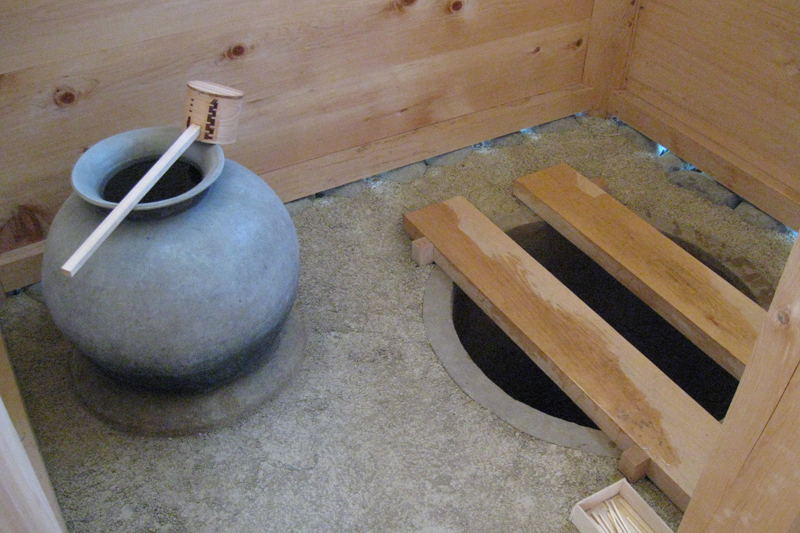
At that time, shipping was the center of transportation, and the Imperial Court and Akita were particularly connected by Tsuchizaki Minato. However, something that did not exist in Japan at the time was discovered in the ruins of Akita Castle. a flush toilet that flushes waste away with water . Of course, this was a major discovery, but what attracted even more attention was the discovery of pig parasites in the waste that had never been found in Japan.
At that time, there was no custom of eating pigs in Japan, especially in the Akita region, and there were no pigs, so there could be no parasites. However, on the Chinese mainland across the Sea of Japan, there was a country called Bokkai, which liked to eat pork, and sent missions to Japan several times. This is recorded in the records of the time, but the exact location of the port of call was not known.
The remains of parasites discovered in the flush toilets of Akita Castle were thought to be evidence that a messenger from the Balhai Kingdom had indeed visited. At the same time, a large number of Chinese ceramics, Tang coins, and Song coins were discovered in the ruins near Akita Castle, indicating that Tsuchizaki Minato was a large port where trade was conducted not only domestically but also with foreign countries. It turned out that.
Akita Castle Ruins Historical Museum<Information>
- Facility name: Akita City Akita Castle Ruins History Museum
- Location: 9-6 Terauchi Yakeyama, Akita City, Akita Prefecture
- Phone number: 018-845-1837
- Opening hours: 9:00-16:30
- Closed: Year-end and New Year holidays (December 29th to January 3rd)
- Admission fee: General 210 yen, free for high school students and younger
- Facility name: Akita Castle Ruins Historic Site Park
- Open all year round
- Free admission
- URL: Akita City Akita Castle Ruins Historical Museum
- access:
- Railway/About 20 minutes by bus from Akita Shinkansen/JR Ou Main Line Akita Station, get off at Akita Castle Historical Museum-mae bus stop
- Car: Approximately 15 minutes from Akita Expressway Akita Kita IC
Google Map
Merchants from Tsuchizaki Minato moved to the castle town of Kubota Castle, and the town became temporarily deserted.
During the Sengoku period, Tsuchizaki Minato became the territory of the Sengoku warlord Ando clan. The Ando clan built Minato Castle in a place closer to Tsuchizaki Minato than Akita Castle. At that time, Tsuchizaki Minato was thriving and developed further, centering on trade with surrounding areas.
In the Edo period, Yoshinobu Satake, a feudal lord in Hitachi Province (Ibaraki Prefecture), was ordered by Tokugawa Ieyasu to transfer to Dewa Province (Akita Prefecture). A year later, he moved to the newly built Kubota Castle in Kubota, a little further away. It is said that Tsuchizaki Minato became deserted because the castle town attracted wealthy merchants from Tsuchizaki Minato.
Yoshinobu Satake recognized the important role of Minato Tsuchizaki

Tsuchizaki Minato is located at the mouth of Akita's largest river, the Omonogawa River, and is the main artery that connects the inland area with Tsuchizaki.It is also connected to Kubota Castle Town by the Asahi River, a tributary, and was able to transport large amounts of goods by boat. It is. Yoshinobu recognized the importance of Tsuchizaki Minato, and immediately built a storehouse to handle annual tax rice, etc., and restored its function as a port.
The cargo collected at Tsuchizaki Minato was the Kitamaebune , and sent to the Kansai region. Kitamae-bune is a ship that carried out huge amounts of business during the Edo period, traveling back and forth across the Sea of Japan, stopping at major ports. At ports in the Tohoku region, including Tsuchizaki Minato, special products were loaded for the Kansai region, and daily necessities and food were unloaded to Tohoku and Hokkaido, where the culture of Kyoto and other areas was conveyed.
Various supplies were brought to Akita by Kitamaebune.

It is said that during the heyday of Kitamaebune, Tsuchizaki Minato was busier than Kubota Castle. This situation is depicted in Edo period illustrations such as ``Akita Kaido Emaki'' and ``Akita Customs Emaki''.

Ship transportation using the Omonogawa River centered around Tsuchizaki Minato has approximately 85 docks up to Yuzawa, which is located on the border with Yamagata. I carried it. Furthermore, shipping on the Omonogawa River was also used to transport products from the Innai Ginzan Silver Mine, which was a source of funds for the Akita clan in the mountains. It is clear that shipping on the Omonogawa River, centered around Tsuchizaki Minato, supported the lives of the entire Akita Prefecture.
According to records from 1810 (Yuzawa Series 6 "Omonogawa River Traffic"), the goods handled by Minato Tsuchizaki were overwhelmingly rice, approximately 150,000 koku (annual tax rice, etc.), and other items. There are many special products such as soybeans and adzuki beans, which produce about 7,000 koku, and wheat, which produces about 1,000 koku. The largest amount of material unloaded from Kitamae-bune ships was cotton, with approximately 155,000 rolls of cotton, along with clothing such as used clothing, salt, sugar, dried herring, food such as tea, paper paper, and candles from the Tohoku region. The main products were daily necessities that were not produced in rural areas.
Tsuchizaki Minato, where large ships could not anchor due to sand accumulation and shallow water depth

Minato Tsuchizaki had a major flaw. Located at the mouth of the Omonogawa River, it was immediately open to the open sea, so the mouth of the river was a sandbar and the water was shallow, making it impossible for the large Kitamaebune ships to approach it. The Kitamaebune was anchored offshore, and cargo was loaded onto a small boat and shuttled between the port and the Kitamaebune.
Furthermore, because it is not surrounded by a cape, it cannot function as a port during bad weather or in the winter when the waves are high, which was a problem.
This drawback could not be resolved throughout the Edo period, and major renovations were forced into the Meiji period.
Tsuchizaki Minato has been extensively renovated since the Meiji era as Akita Port and developed into a modern port.

In the Meiji period, residents submitted a petition to Akita Prefecture for port development, and in the 1900s, large steamships were finally able to dock at the port. In 1902 (Meiji 35), Tsuchizaki Station on the Ou Main Line opened, and goods unloaded at Tsuchizaki Port began to be transported to various locations by rail. With the opening of the railway, Tsuchizaki Port's handling volume increased more than ever before, but the ironic result was that shipping via the Omonogawa River declined.
Renovation work on Tsuchizaki Port continued after the Meiji period, and was completed in 1938 (Showa 13). This prevents the port from being filled with mud and sand, allowing large ships to arrive and depart at all times. However, at the end of World War II, Tsuchizaki was bombed and the port suffered severe damage. After the war, in order to regain the paralyzed port, three abandoned warships were sunk and construction work was carried out to turn it into a breakwater, and the port was able to regain some of its functions.
After the war, Tsuchizaki Port was designated as a new industrial city in the Akita Bay area in 1965 (Showa 40), and full-scale development into a modern port began, and a quay that can accommodate 40,000-ton class ships has now been completed. is developing further.
“Tsuchizaki Port Hikiyama Festival” is a National Important Intangible Folk Cultural Property and a UNESCO Intangible Cultural Heritage.

The Tsuchizaki Port Hikiyama Festival is a festival that has been passed down in Tsuchizaki for over 300 years. The festival is held for two days, July 20th and 21st, and Hikiyama floats called "Yama" and "Dashi" reenacting famous historical scenes carry warrior dolls from the Sengoku period and parade through the town. . New Hikiyama floats are created every year in each town, and the floats compete in their roughness and decoration. Minato Bayashi (port festival drums) and Minatobayashi (port festival drums) liven up the atmosphere, and the town is engulfed in the excitement of the festival.
The Tsuchizaki Port Hikiyama Festival is said to have started in the early 1700s at Tsuchizaki Shinmeisha Shrine The Tsuchizaki Port Hikiyama Festival has been designated as a national important intangible folk cultural property it was also registered as a UNESCO Intangible Cultural Heritage
Tsuchizaki Shinmeisha <Information>
- Facility name: Tsuchizaki Shinmeisha (Minato Castle Ruins)
- Location: 3-9-37 Tsuchizakiko Chuo, Akita City, Akita Prefecture (Tsuchizakiko Station Street, Akita City)
- Phone number: 018-845-1441
- URL: Tsuchizaki Shinmeisha
- access:
- Railway/Approximately 4 minutes walk from Tsuchizaki Station on the JR Ou Main Line
- Car: Approximately 15 minutes from Akita Expressway Akita Kita IC




![The foundation of Akita City is the castle town of Kubota Castle, created by Satake Yoshinobu [Akita Prefecture] Yoshinobu Satake](https://jp.neft.asia/wp-content/uploads/2024/01/Satake_Yoshinobu-150x150.jpg)
![Hiyama Ando clan, ruled Akita during the Sengoku period and based in Noshiro [Akita Prefecture] Akita Fan](https://jp.neft.asia/wp-content/uploads/2025/03/0275d341934f847be3452ea4662d9a4e-150x150.jpg)
![The battle for bone flesh unfolded in Yokote Basin: "Three Years of Second Year Battle" [Akita Prefecture] 0fb6939d60ada03f05f13ef893cd6663](https://jp.neft.asia/wp-content/uploads/2023/07/0fb6939d60ada03f05f13ef893cd6663-150x150.jpg)
![[Akita Prefecture/Oga Peninsula] Full of view points. Oga Peninsula, a magnificent park created by the earth 3D84CC3D4A133D89422D448F000C277B](https://jp.neft.asia/wp-content/uploads/2024/04/3d84cc3d4a133d89422d448f000c277b-150x150.jpg)
![[Hirogata reclamation history ①] The second largest lake in Japan has become a vast rice field [Ogata Village, Akita Prefecture] 7561d23df2a0ec24c664e184c3fc8d8f](https://jp.neft.asia/wp-content/uploads/2024/07/7561d23df2a0ec24c664e184c3fc8d8f-150x150.jpg)
![The castle town of Kubota Castle since the Meiji period, when it was hit by many major fires, [Akita City, Akita Prefecture] 25416843_m (1)](https://jp.neft.asia/wp-content/uploads/2024/01/25416843_m-1-150x150.jpg)
![Hot springs gush out in a place where there are no volcanoes! "Yuzawa Geopark" where you can see the mystery of the earth up close [Akita Prefecture] 4550228_m](https://jp.neft.asia/wp-content/uploads/2023/02/4550228_m-150x150.jpg)
![Akita dogs are treasures in Japan! The Akita Inu Preservation Society in Odate City strictly manages pedigree [Akita Prefecture] Akita dog](https://jp.neft.asia/wp-content/uploads/2024/01/25534593_m-150x150.jpg)



